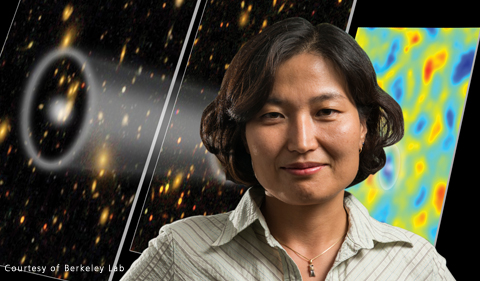Dr. Hee-Jong Seo is an astrophysicist who joined Physics & Astronomy in January 2015. She is a member of Ohio University’s Astrophysical Institute.
“I was born in Busan, South Korea. Due to external circumstances, I pursued my education in a college of pharmacy in the Busan National University instead of studying astrophysics, which had been my dream. After a few years of working in local pharmacies and a hospital to save enough money to come to the United States and study astrophysics, I was accepted in the undergraduate program of the University of Arizona in the spring of 1999. There I studied disk properties of young stellar objects alongside my mentor and adviser, Dr. George Rieke.
“I graduated in 2001 with a B.S. in astronomy and physics and was accepted to the graduate program of the University of Arizona. I worked on the large scale structure of the universe under the guidance of Dr. Daniel Eisenstein and graduated with a Ph.D. in 2007. I then moved to Fermilab and worked as a postdoc for the next three years. In 2010, I became a fellow at the Berkeley Center for Cosmological Physics at the University of California. Three years later I received an offer to join the faculty at Ohio University. In 2013, I moved to Columbus, OH, to spend one year as a CCAPP Postdoctoral Fellow at Ohio State University, and then moved to Athens in Fall 2014.
“My research interests,” she says, “are in high-precision cosmology with large scale structure. I study the distributions of galaxies and matter on very large scales to infer how our universe has expanded, what our universe is composed of, and therefore to collect observational clues to identify dark energy and dark matter, which together makes up 95 percent of the universe while still being quite mysterious.
“My work involves various methods of analyzing the large-scale structure of galaxies and matter, including analytical, numerical, observational studies of Baryon Acoustic Oscillations, a distinct feature imprinted in large galaxy surveys and or radio surveys, as a dark energy probe. I am also interested in relating observed galaxies to the underlying dark matter halo distributions, finding the upper limit on neutrino mass using the large scale structure, weak gravitational lensing signal of the dark matter distribution.
“Outside of work, I am a mother of two young children, and that keeps me quite busy. My non-astrophysics investigations are on-going; to look for cool playgrounds and places for family outings.”



















Comments